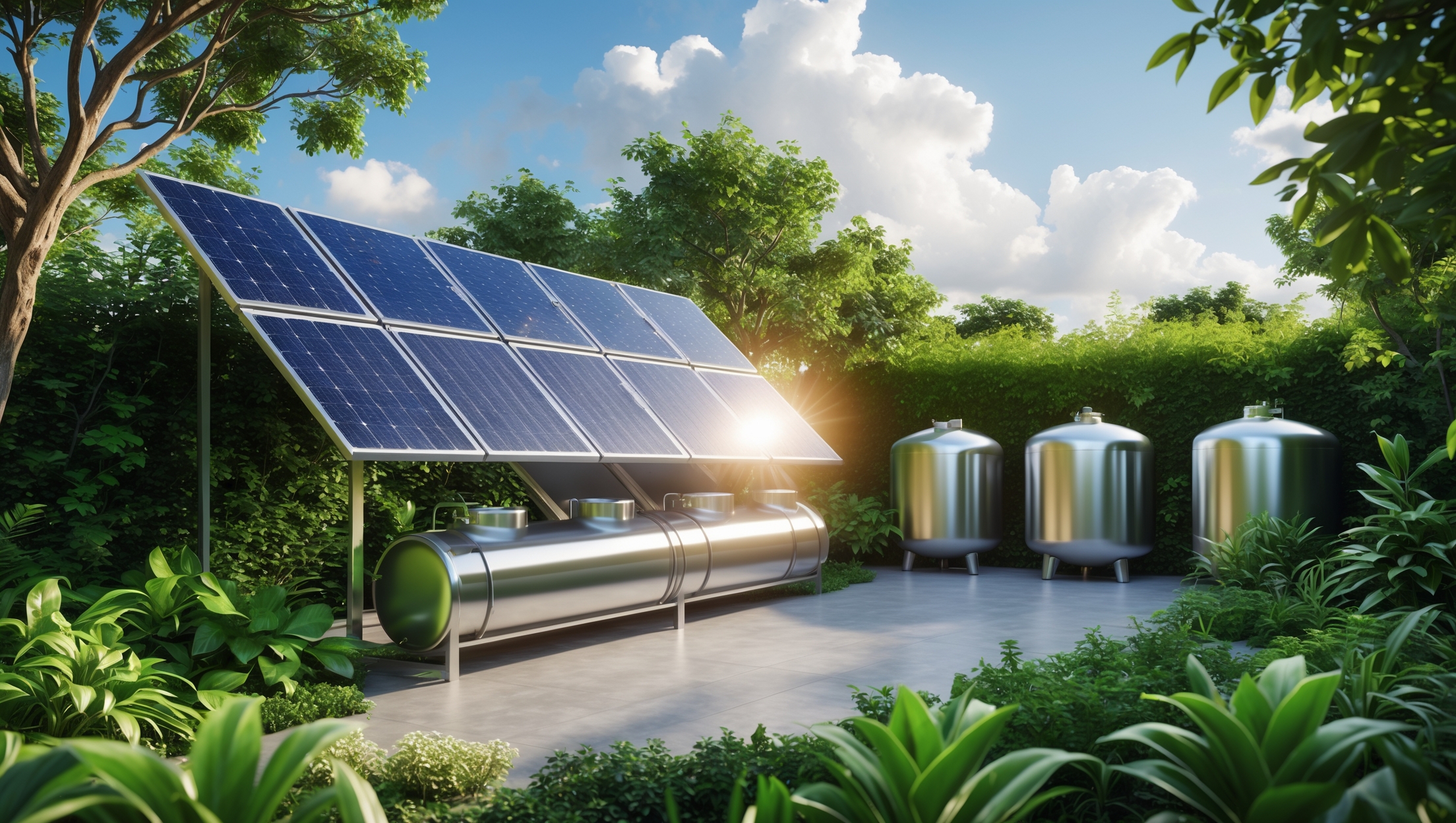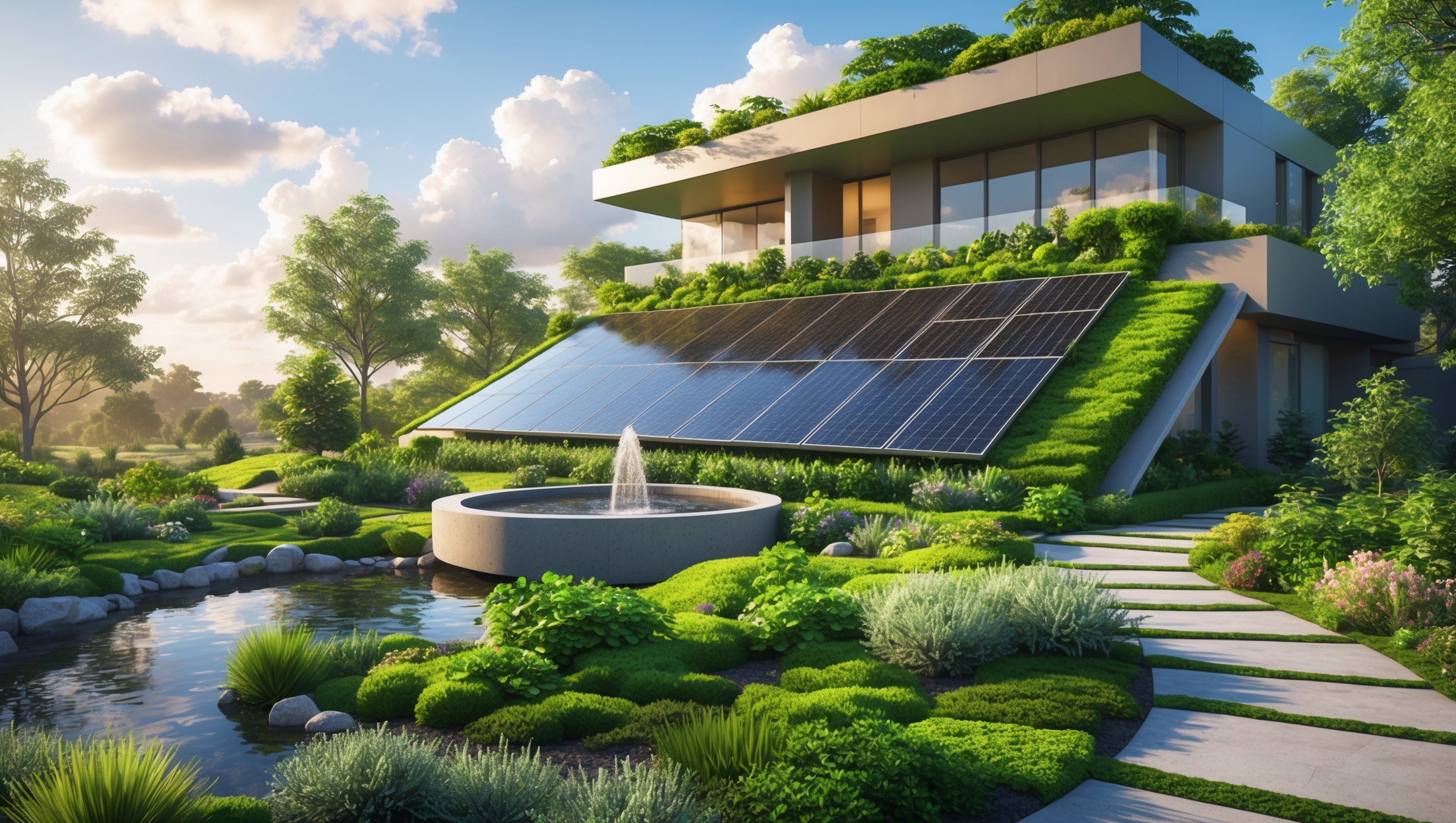Introduction: Why Home Solar Desalination is Gaining Traction
The global freshwater crisis is prompting households to seek sustainable, resilient water solutions. Home-scale solar desalination—using the sun’s energy to transform saline or brackish water into drinkable water—has emerged as a promising technology for off-grid homes, coastal properties, and eco-conscious urban dwellers. But what does it really cost to set up a solar desalination system at home? Is it affordable, and what should you budget for in both the short and long term? This comprehensive guide breaks down every expense, from system selection and installation to maintenance and hidden costs, so you can make an informed investment in your family’s water security. Whether you’re motivated by drought, rising municipal water prices, or a desire to live more sustainably, this guide will demystify the financial landscape of home solar desalination and help you avoid common pitfalls that can spike your budget. Let’s dive into what it takes—financially—to turn sunlight and saltwater into a reliable supply of pure drinking water.
Understanding Home-Scale Solar Desalination
How Solar Desalination Works
Solar desalination systems harness solar energy—through thermal or photovoltaic means—to remove salts and contaminants from water. The two main approaches for home systems are:
- Solar Still (Direct): Uses sunlight to evaporate water, which then condenses as pure water, leaving salts behind. Simple, low-tech, but lower output.
- Solar-Powered Reverse Osmosis (Indirect): Uses solar panels to power pumps that force water through membranes, filtering out salts and impurities. Higher initial cost, but greater daily output.
Who Should Consider Home Solar Desalination?
This technology is ideal for:
- Coastal or island homes with access to brackish or seawater
- Remote/off-grid residences with unreliable municipal water
- Eco-homes aiming for water independence
Cost Breakdown: What to Expect
1. Upfront Equipment Costs
- Solar Panels: $1,000–$3,000 for 1–2 kW (enough for most home-scale systems)
- Desalination Unit:
- Solar Still Kit: $400–$1,000 (for 5–15 liters/day)
- Reverse Osmosis Unit: $1,500–$5,000 (for 50–100 liters/day)
- Storage Tanks: $150–$500 (polyethylene or stainless steel, 100–500 liters)
- Pumps & Controllers: $300–$800 (for RO systems; solar stills are passive)
- Pre-Filtration (Sediment/Carbon): $100–$300
- Piping & Fittings: $100–$250
2. Installation Costs
- DIY Installation: Minimal extra costs if you have tools and skills
- Professional Installation: $800–$2,500 depending on complexity, local labor rates, and site preparation
3. Permitting and Compliance Costs
- Local Permits: $50–$300 (varies by municipality)
- Water Quality Testing: $100–$250 (initial, then annual)
4. Ongoing Operational Expenses
- Consumables (Filters, Membranes): $100–$400/year (RO systems)
- Maintenance/Repairs: $50–$300/year
- Water Quality Monitoring: $30–$60/year (test kits)
- Replacement Parts (Pumps, Sensors): $100–$300 every 3–5 years
5. Optional Upgrades
- Automation (Remote Monitoring, Auto-Flush): $200–$800
- UV Sterilizer: $100–$300 (for extra microbial safety)
- Larger Storage Capacity: $200–$1,000 (for backup supply)
Budgeting for Your System: Step-by-Step
Step 1: Assess Your Water Needs
Calculate your daily water consumption. For drinking and cooking, a typical household needs 8–15 liters per person per day. Factor in pets, gardens, and contingency for guests or emergencies.
Step 2: Choose the Right Technology
- Solar Still: Budget-friendly for small needs, but limited scalability.
- Solar RO: Higher upfront costs, but suitable for larger households or continuous supply.
Balance your water needs against your budget and available space.
Step 3: Itemize All Costs
Use the breakdown above to list every component and service you’ll need. Don’t forget to include shipping fees (especially for large tanks or panels), taxes, and potential site preparation (e.g., concrete pads, fencing).
Step 4: Get Multiple Quotes
Obtain at least three quotes for major equipment and installation. Compare warranty terms, included services, and after-sales support. Ask about package deals from reputable green tech suppliers.
Step 5: Plan for Contingencies
Set aside a 10–15% contingency fund for unforeseen expenses: additional fittings, unexpected site issues, or upgrades. This buffer can prevent budget overruns and installation delays.
Step 6: Calculate Payback Period
Estimate your annual water savings by multiplying your current water bill by 12. Divide your total system investment by these annual savings to estimate the payback period. Factor in potential increases in municipal water rates for a more realistic picture.
Real-World Example Budgets
Case A: Small Off-Grid Cabin (Solar Still)
- Solar Still Kit (10L/day): $700
- Solar Panel (250W): $350
- Storage Tank (200L): $200
- Piping & Fittings: $120
- DIY Installation: $0
- Total Initial Investment: $1,370
- Yearly Consumables: $50
Case B: Family Home (Solar-Powered RO, 4 People)
- Solar Panels (1.5kW): $2,200
- RO Unit (80L/day): $2,400
- Pre-Filtration: $180
- Storage Tank (500L): $400
- Pumps & Controllers: $500
- Professional Installation: $1,500
- Permits & Testing: $200
- Total Initial Investment: $7,380
- Yearly Consumables & Maintenance: $320
Saving Money: Smart Budgeting Tips
- Consider Refurbished Equipment: Especially for solar panels and tanks, reputable sources offer significant savings.
- Group Buys: Team up with neighbors to purchase in bulk and negotiate discounts.
- DIY Where Possible: Even if you hire a pro for plumbing/electrical, pre-assemble or site-prepare to minimize hours billed.
- Prioritize Essentials: Start with a basic system. Add automation or extra storage later as budget allows.
- Apply for Incentives: Check for local/state/federal rebates for solar or water-saving technologies.
- Track Operational Costs: Log filter changes, repairs, and water output. This data helps optimize future spending.
Hidden Costs and Common Budgeting Pitfalls
- Underestimating Site Preparation: Rocky or sloped ground may require grading or concrete pads.
- Neglecting Water Testing: Skipping initial or periodic testing can risk health and void warranties.
- Overlooking Brine Disposal: Some municipalities have restrictions on saline brine disposal—factor in possible hauling or evaporation pond costs.
- Buying Oversized Systems: Bigger isn’t always better; oversizing increases costs and maintenance with little benefit if daily needs are overestimated.
- Ignoring Maintenance: Filters and membranes aren’t optional—budget for replacements to maintain water quality and system life.
Comparing Costs: Solar Desalination vs. Other Water Solutions
- Rainwater Harvesting: Lower upfront costs, but less reliable in arid climates or drought years.
- Traditional Well Drilling: $3,000–$15,000+, with risk of brackish or contaminated groundwater in coastal areas.
- Bottled Water: Expensive, unsustainable, and impractical for daily needs.
- Municipal Water: Can be affordable, but subject to rising rates, drought restrictions, and outages.
Solar desalination is most cost-effective where mains water is expensive or unreliable, or for households seeking off-grid resilience and environmental sustainability.
Long-Term Value: Return on Investment and Sustainability
When properly maintained, solar desalination systems can last 15–25 years. Over this period, the system can pay for itself through avoided water bills, especially as municipal prices climb. The environmental value—reduced plastic waste, lower carbon footprint, and water independence—adds further justification for the investment. Factor in the cost of peace of mind during droughts or emergencies, and the long-term ROI becomes even clearer.
Conclusion: Making Solar Desalination Work for Your Home and Budget
Solar desalination represents a transformative step toward self-reliant, sustainable living—especially for those facing water scarcity or seeking to minimize their ecological footprint. While the upfront investment can be significant, careful budgeting and smart choices make it achievable for many homeowners. By understanding each component cost, planning for maintenance, and avoiding common budgeting pitfalls, you can design a system scaled to your actual needs—without financial surprises along the way.
Start with a realistic assessment of your household’s water demand. Choose technology and capacity that match your needs, not your hopes. Itemize every cost, from panels to permits. Don’t overlook ongoing expenses—filters, water testing, and the occasional repair are part of responsible ownership and water safety. Take advantage of incentives, group purchasing, and DIY opportunities to stretch your budget further.
Most importantly, view your investment not just in terms of dollars and cents, but as a safeguard for your health, comfort, and independence in a changing climate. Properly budgeted, a home-scale solar desalination system delivers more than just water: it brings peace of mind and a powerful example of sustainable innovation for your family and community. With the right planning and a clear-eyed approach to costs, you can turn the sun’s energy into a reliable, affordable source of pure, life-giving water—for decades to come.





I noticed you mention both solar stills and solar-powered reverse osmosis systems. For a typical household of four, how do the daily output and maintenance costs compare between these two approaches?
For a household of four, solar stills usually produce around 4–8 liters of fresh water per day, which may not meet daily needs, and their maintenance costs are low—mainly cleaning and occasional glass replacement. Solar-powered reverse osmosis systems can deliver 50–200 liters per day, enough for most families, but have higher maintenance costs due to periodic filter and membrane replacement, as well as upkeep of electrical components.
I’m interested in what kind of hidden costs might come up after installing a home-scale solar desalination system. Are there any common unexpected expenses that homeowners should be aware of beyond what you mentioned in the upfront cost breakdown?
After installation, some hidden costs can include periodic maintenance, such as replacing filters or cleaning solar panels to maintain efficiency. You might also face repairs if components wear out due to salt buildup or harsh weather. Monitoring equipment could need calibration or replacement over time. Additionally, if regulations change in your area, you might need to upgrade or modify your system to stay compliant. Factoring in these ongoing or unexpected expenses can help avoid surprises later.
You touched on the technology being ideal for drought conditions and rising municipal water prices. Can you provide a ballpark estimate of the initial investment and payback period for a standard home setup?
For a typical home-scale solar desalination system, the initial investment can range from $2,000 to $8,000, depending on system size, components, and installation costs. The payback period varies based on local water prices and sun exposure but usually falls between 4 to 10 years. Savings accelerate where municipal water rates are high or access is limited.